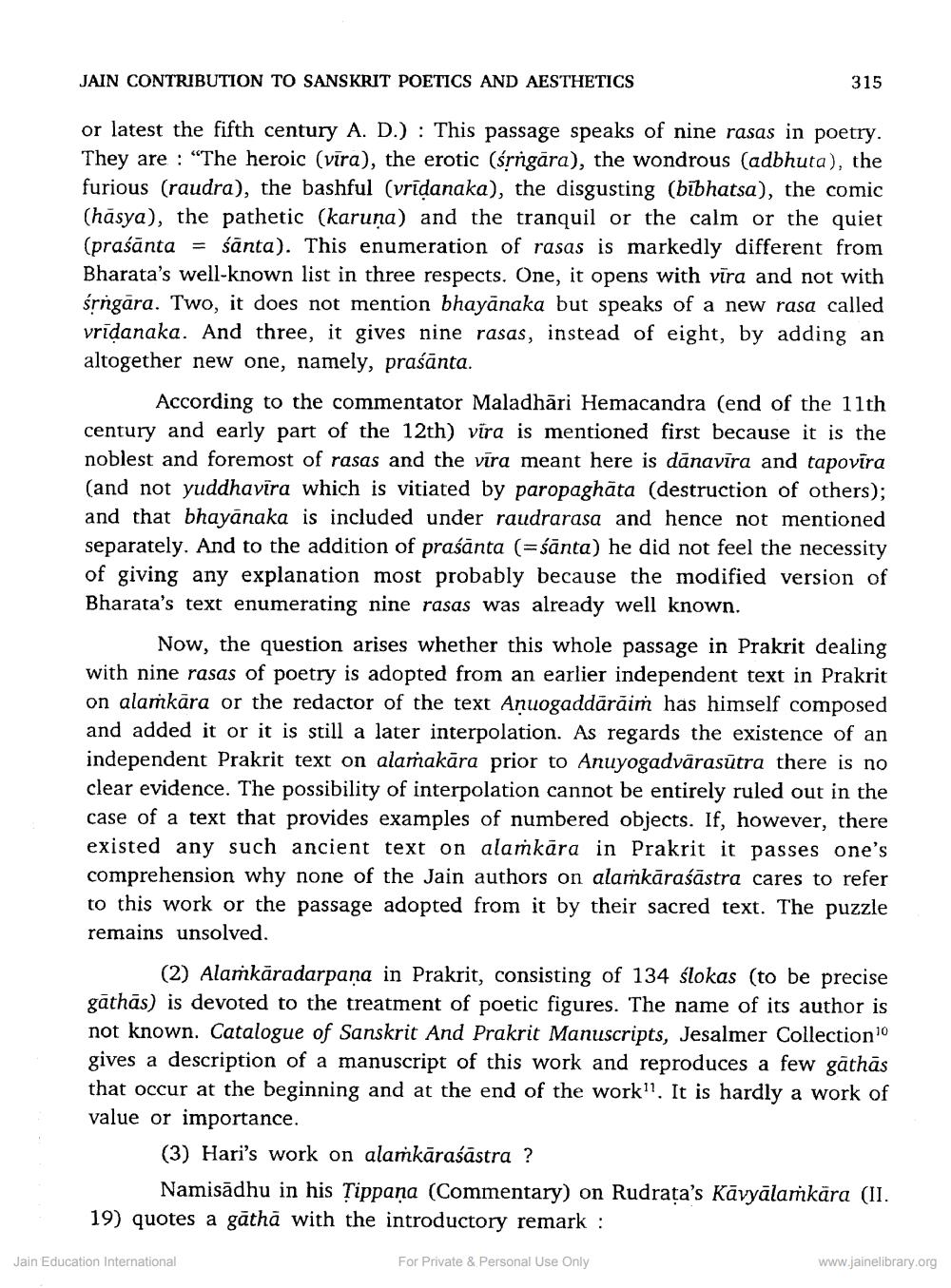________________ JAIN CONTRIBUTION TO SANSKRIT POETICS AND AESTHETICS 315 or latest the fifth century A. D.) : This passage speaks of nine rasas in poetry. They are : "The heroic (vira), the erotic (srngara), the wondrous (adbhuta), the furious (raudra), the bashful (vridanaka), the disgusting (bibhatsa), the comic (hasya), the pathetic (karuna) and the tranquil or the calm or the quiet (prasanta = santa). This enumeration of rasas is markedly different from Bharata's well-known list in three respects. One, it opens with vira and not with srngara. Two, it does not mention bhayanaka but speaks of a new rasa called vridanaka. And three, it gives nine rasas, instead of eight, by adding an altogether new one, namely, prasanta. According to the commentator Maladhari Hemacandra (end of the 11th century and early part of the 12th) vira is mentioned first because it is the noblest and foremost of rasas and the vira meant here is danavira and tapovira (and not yuddhavira which is vitiated by paropaghata (destruction of others); and that bhayanaka is included under raudrarasa and hence not mentioned separately. And to the addition of prasanta (=santa) he did not feel the necessity of giving any explanation most probably because the modified version of Bharata's text enumerating nine rasas was already well known. Now, the question arises whether this whole passage in Prakrit dealing with nine rasas of poetry is adopted from an earlier independent text in Prakrit on alamkara or the redactor of the text Anuogaddaraim has himself composed and added it or it is still a later interpolation. As regards the existence of an independent Prakrit text on alamakara prior to Anuyogadvarasutra there is no clear evidence. The possibility of interpolation cannot be entirely ruled out in the case of a text that provides examples of numbered objects. If, however, there existed any such ancient text on alamkara in Prakrit it passes one's comprehension why none of the Jain authors on alamkarasastra cares to refer to this work or the passage adopted from it by their sacred text. The puzzle remains unsolved. (2) Alaskaradarpana in Prakrit, consisting of 134 slokas (to be precise gathas) is devoted to the treatment of poetic figures. The name of its author is not known. Catalogue of Sanskrit And Prakrit Manuscripts, Jesalmer Collection gives a description of a manuscript of this work and reproduces a few gathas that occur at the beginning and at the end of the work?. It is hardly a work of value or importance. (3) Hari's work on alamkarasastra ? Namisadhu in his Tippana (Commentary) on Rudrata's Kavyalamkara (II. 19) quotes a gatha with the introductory remark : Jain Education International For Private & Personal Use Only www.jainelibrary.org




